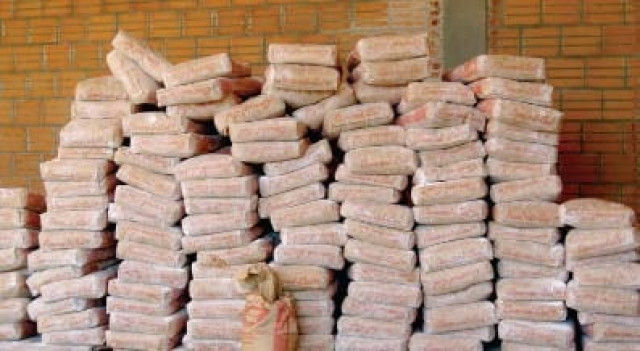Business
Despite floods, sales of cement rise 12.5% | The Express Tribune

LAHORE:
Local cement sales of Pakistan’s industry reached 3.097 million tons in August 2025, higher by 10.33% compared to sales of 2.807 million tons in the corresponding month of last year, according to data released by the All Pakistan Cement Manufacturers Association (APCMA).
Exports rose 22.13% as volumes stood at 749,723 tons in August 2025 against 613,857 tons in August 2024. In terms of growth figures, July was far better as the industry registered an increase of 18.61% year-on-year (YoY) in domestic sales and a jump of 84% in exports. Total cement dispatches during August 2025 were calculated at 3.846 million tons against 3.421 million tons in the same month of last fiscal year, exhibiting an increase of 12.45%.
North-based mills supplied 2.795 million tons, up 8.10% from 2.585 million tons in August last year. Similarly, southern mills sold 1.05 million tons, which was 25.93% higher than dispatches of 0.835 million tons in the previous year. Mills in the northern zones dispatched 2.586 million tons to domestic markets, showing an increase of 8.64% compared to sales of 2.380 million tons last year. South-based mills provided 510,758 tons to local markets, higher by 19.81% over dispatches of 426,289 tons during August 2024.
Exports from the northern mills marginally increased by 1.84% as volumes rose from 204,901 tons in August 2024 to 208,669 tons in August 2025. Exports from the south recorded a healthy growth of 32.30% to 541,054 tons compared to 408,956 tons last year.
During the first two months (July-August) of the current fiscal year, total cement dispatches were 7.847 million tons, which was 20.88% higher than last fiscal year.
A spokesman for the APCMA mentioned that Pakistan was passing through tough times due to excessive rains and floods, which have extensively impacted the citizens. He urged the government to reduce taxes on cement to bring down the cost of rehabilitation in the rain and flood-stricken areas.
Business
Smartworld Developers enters Noida, to invest Rs 2K cr on 1st realty project – The Times of India

Realty firm Smartworld Developers will invest around Rs 2,000 crore to build its first project in Noida, as part of the company’s plan to expand beyond the Gurugram property market. Smartworld Developers has announced its entry into Noida, which is an important micro-market in the Delhi-NCR. The company has acquired a 6-acre land parcel in Sector 98 along the Noida Expressway through an auction process for Rs 414 crore, it said in a statement. Smartworld Developers will build a mixed-use project comprising premium branded residences, high-street retail, and serviced homes. The company will invest around Rs 2,000 crore to build this project, while the estimated revenue exceeds Rs 3,000 crore. “Entry into Noida is a significant milestone for Smartworld Developers as we further strengthen our presence in the NCR region. Noida’s rapidly evolving infrastructure and its growing importance as a key real estate hub offer immense potential,” said Ashish Jerath, President – Sales & Marketing, Smartworld Developers. The company is in discussions with a leading global brand for a potential collaboration on the Noida project. Smartworld Developers clocked Rs 6,400 crore worth of sales bookings last fiscal year, a remarkable 60 per cent annual growth. Gurugram-based Smartworld Developers has delivered around 6.5 million sq ft to date, and another 20 million sq ft is currently under construction. According to real estate consultant PropTiger data, housing sales across eight major cities fell 95,547 units during the third quarter of this calendar year from 96,544 units in the corresponding period of the preceding year. Sales of residential properties in Delhi-NCR decreased 21 per cent to 7,961 units from 10,098 units, said PropTiger, which Aurum PropTech has recently acquired.
Business
IndiGo Faces Massive Flight Cancellations: Can Travel Insurance Save Stranded Flyers?

Last Updated:
IndiGo faces massive flight cancellations despite DGCA rollback, affecting thousands. Experts like advise on travel insurance claims and proper documentation.
ndiGo Disruption Intensifies: What Travel Insurance Covers During Flight Chaos
There seems to be no end to the mayhem of IndiGo’s operational meltdown as hundreds of flights have been cancelled on Saturday. The chaos has continued despite the Directorate General of Civil Aviation (DGCA) rolling back the Flight Duty Time Limitations orders, which were the lead cause to disrupt the capability of carriers to maintain regular operation.
Thousands of passengers, from students to senior citizens to professionals, have been affected in the past few days during the flight cancellations, disrupting their plans and schedules. Along with that, they have to face monetary losses too.
Travel insurance is one such option that travelers can use while facing this kind of situation. Not many of people in India are aware of how a travel insurance works and whether all plans cover flight cancellation costs.
Meet Kapadia, Head of Travel Insurance at Policybazaar.com said that travel Insurance offers fixed pay outs if the traveller is stranded for a specified number of hours (6–12 hours).
“They also reimburse the cost if the flight is cancelled and traveller has to book a new flight, or arrange hotel stay, cover meals, essentials, and other emergency purchase,” Kapadia added.
Customers, however, should know that a very low-priced/ basic product of travel insurance may not pay for non-medical losses from an airline operational cancellation unless that benefit is purchased, according to Chetan Vasudeva, Senior Vice President – Business Development at Elephant.in, Alliance Insurance Brokers.
“No – basic plans may not fully cover losses from airline operational problems unless the policy explicitly includes or has an option for trip cancellation / carrier cancellation, trip interruption, missed-connection or trip-delay benefits,” Vasudeva added.
He further told that many standard travel policies include only basic medical, baggage and emergency assistance by default. “If you want protection specifically against airline operational issues, check for carrier cancellation/trip cancellation/missed-connection or buy a cancel-for-any-reason add-on cover.”
Beyond the financial safety net , the insurer also provides 24×7 assistance and emergency support to help passengers manage disruption with less stress in unfamiliar locations.
What Should Customers Need To Do To Get Claims?
The first 24 hours after a flight cancellation are crucial for building a strong claim file.
The policyholder should immediately need to obtain written proof from the airline such as an email, SMS, or a formal flight disruption certificate, that clearly state the due cause and timing of the cancellation, explained Vasudeva. “At the same time, this is when policyholder should inform their insurance provider’s helpline immediately after the disruption; quick intimation is often listed as a mandatory requirement in most policies,” he added.
During this period, every incidental expense such as food, hotel stays, transport, or rebooking, should be supported with itemized receipts and payment proofs. If the airline offers alternative arrangements like meal vouchers or free accommodation, passengers need to preserve those records as well, because insurers cross-verify what has already been compensated.
Careful documentation in the first 24 hours substantially reduces the chances of queries, delays, or rejection during the processing of claims, Vasudeva stated.
December 06, 2025, 13:56 IST
Read More
Business
North Tyneside Warm Welcome hubs an ‘important’ helping hand

People struggling with high heating bills and other cost-of-living pressures are being encouraged to use a series of “Warm Welcome” spaces this winter.
More than 20 places across North Tyneside, including community hubs, libraries and churches, are taking part in the scheme, which also sees free food and drink offered alongside a range of activities.
The Meadows community centre in North Shields is among them, with sessions each Thursday from noon until 14:30 GMT.
Support worker Jen Buchanan says it means help is available at a time of year when it is badly needed.
“There are no boundaries – everybody is welcome. That’s the message we try to get out there.
“They can have something hot to eat, make new friends or even just charge their phones and iPads.
“We also run craft sessions to encourage more people to come and that helps take away any stigma people might have about coming in for food.
“More and people are coming along, which really shows the importance of schemes like this.”
The hubs can also serve as a way to direct people towards long-term help, Ms Buchanan says, for issues such as struggling to pay heating bills, income support or gaining work skills.
“We have a crisis fund for emergencies and can help get someone gas and electric, or refer them to support groups for longer-term problems.
“We’ve even bought someone new shoes because they were walking around wet.”
The scheme is being funded through North Tyneside Council’s Household Support Fund, which the authority says is part of a range of measures aimed at helping people in the area with cost-of-living pressures.
A list of the venues taking part can be found on the authority’s website.
-

 Sports5 days ago
Sports5 days agoIndia Triumphs Over South Africa in First ODI Thanks to Kohli’s Heroics – SUCH TV
-

 Tech6 days ago
Tech6 days agoGet Your Steps In From Your Home Office With This Walking Pad—On Sale This Week
-

 Fashion5 days ago
Fashion5 days agoResults are in: US Black Friday store visits down, e-visits up, apparel shines
-

 Entertainment5 days ago
Entertainment5 days agoSadie Sink talks about the future of Max in ‘Stranger Things’
-

 Politics5 days ago
Politics5 days agoElon Musk reveals partner’s half-Indian roots, son’s middle name ‘Sekhar’
-

 Tech5 days ago
Tech5 days agoPrague’s City Center Sparkles, Buzzes, and Burns at the Signal Festival
-

 Sports5 days ago
Sports5 days agoBroncos secure thrilling OT victory over Commanders behind clutch performances
-

 Entertainment5 days ago
Entertainment5 days agoNatalia Dyer explains Nancy Wheeler’s key blunder in Stranger Things 5











